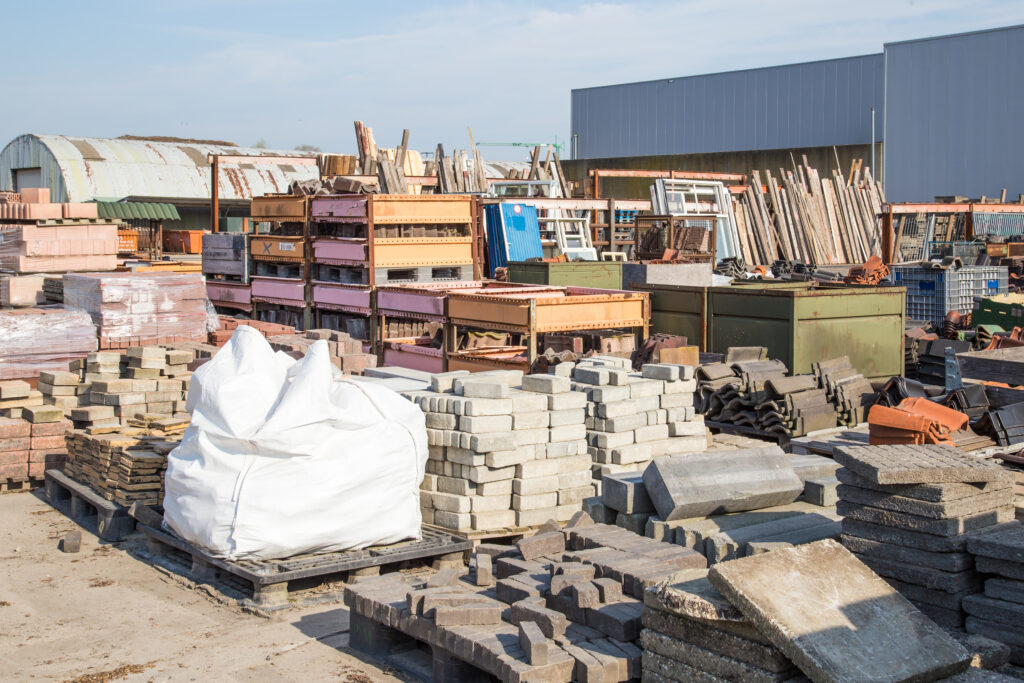Yaseen Raad
GCHU Intern and DPhil Sustainable Urban Development candidate, Kellogg College, University of Oxford
Email: [email protected]
The construction industry in the UK currently involves the inevitable by-product of waste. According to the Department for Environment, Food & Rural Affairs, the construction, demolition, and excavation industry produced 62% of the total waste in the UK in 2018. The recovery rate of Construction and Demolition Waste (CDW) stands at 92.6% as of 2020, which is among the highest in Europe, surpassing the 70% recovery target set by the European Commission for the same year. Most of this recovery comes from downcycling CDW into aggregates for reuse in new construction. This at first may suggest that current construction methods are already sustainable. However, downcycling CDW into aggregates can only do so much. According to a 2022 report by the Mineral Products Association, the UK is reaching its ‘upper limit’ in aggregate recycling with 72% of total aggregate demand being met through primary source extraction, resulting in resource depletion and greenhouse gas emissions. Although commendable, aggregate recycling appears to be insufficient. The construction sector in the UK must readjust if it were to undertake business more sustainabily. Embedding circularity hubs in the construction value chain would help spread awareness, establish regional circularity networks and introduce diverse recycling practices. Circularity hubs may be better conceived as one amongst other methods aiming to address systemic unsustainability in construction within the bounds of actually existing capitalism. In what follows, I will briefly discuss circular economy, sketching the contours of the evidence as discussed in the emerging literature on circular construction. I will then explore what it means for the construction sector in the UK to capitalize on regional building material hubs.

The circular economy is defined as ‘an economic system that replaces the “end-of-life” concept with reducing, alternatively reusing, recycling and recovering materials in production/distribution and consumption processes’. The four Rs (reduction, reuse, recycle, and recover) constitute the main features of circular economy. When applied to construction, three applications of circular economy have been identified for the built environment. These are resource and waste management, design for reversible buildings, and business and stakeholder networking. Current resource and waste management practices emphasise quantity of recycled materials rather than quality. This is the case in a number of European countries including the UK. Reuse in construction should be equally promoted to maintain recycled building materials of adequate quality. Those involved in the management of CDW in the UK may lack sufficient awareness of the concept of closed-loop, circular construction. They may equally be unwilling to implement reversible building design despite their understanding of the concept due to perceived risk of losing business competitiveness. In fact, numerous studies illustrate the same concern as a major barrier preventing the uptake of circularity in construction. Accordingly, the construction sector could really benefit from a clear business case and model to enable circularity in construction.
As a business model with viable examples from other countries, regional building material hubs present a promising opportunity to raise awareness, accumulate expertise, and establish networks within the circular construction sector and related sectors. Circularity hubs can be defined as ‘locations where clusters of circular companies can gather to exchange resources and knowledge, or where waste can be stored, processed, and re-distributed as secondary resources.’ In the Netherlands, there are different types of hubs, each playing a certain role in the circular construction value chain (e.g., industrial, logistics, redistribution, etc.). Moreover, building material hubs may also be categorized according to their organziational type. In the US, both for-profit and not-for-profit building material hubs have been shown to operate successfully. Examples of circularity hubs in the US include Community Forklift and ReUse Action. These were established within former factories, further contributing to sustainable urban development by adaptively reusing abandoned buildings. Community events are hosted there as well to spread awareness about circular construction. Both organizations have an online marketplace to ensure access to larger markets and clients including Small and Midsize Enterprises (SMEs). Another important criterion concerns the actual location of hubs. These should be located in a way that facilitates accessibility and minimizes travel distance to ensure circularity benefits are not offset by greenhouse gas emissions from long transportation routes.
In the end, circularity hubs appear to hold more promise in the context of the circular construction sector in the UK, especially in the short to medium term. These hubs may compensate for the decreasing power of local planning authorities to initiate change due to limited resources and an austerity-based mode of neoliberal governance. However, change in dominant beliefs and practices must also happen in the government and among ordinary people in order to establish a thriving circular economy in the long run. Scholars emphasise the important role of the government to initiate change toward circularity through infrastructure, policy, regulation, and incentives. The way we perceive the value of used building materials also plays an important role in whether circular construction will ever gain wider traction. The way we normally perceive our ‘contaminated interaction’ with used objects results in object avoidance, devaluation, and misuse, hampeing us from adopting material circulation. Unless all of us as ordinary people, government officials, and business people change our bias towards newly extracted and manufactured materials, circular economy in construction as well as other sectors may remain limited and insufficient despite our hope for more sustainable urban development.
